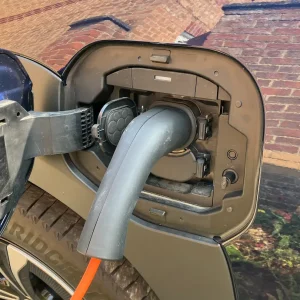Charging EVs in rural areas and during storms are among the issues fleets are facing with electrification, an Association of Fleet Professionals (AFP) webinar has heard.
The event focused on real-world charging experience from members of the organisation’s kerbside charging group, including Defra group fleet services director Dale Enyon, who explained the challenges rural charging was posing.
He said: “Large parts of the areas that we need to reach have literally nothing in the way of charging facilities. The public infrastructure is currently very much based around motorways and A roads.
“There are potential solutions, however. One promising avenue is charger sharing, which means that we may be able to access private charging points on a pay-per-use basis using an app.
“We are also looking at increasing our return-to-base charging capacity, although this has limits.”
Another webinar participant, SSE head of fleet and travel Simon Gray, explained that the recent Storm Arwen had highlighted issues around using EVs to respond to emergency situations.
He said: “We had 700 engineers on the ground during Arwen who were trying to restore essential power to homes and businesses. The situation did raise a fundamental question – how do you keep EVs running during a power outage?
“We’re looking into answers to this conundrum and alternative resources may include options such as mobile chargers. Our view is that there will be solutions to this issue but that we just need to identify them.”
The AFP is planning to draw up a national heat map showing where kerbside charging is needed, based on feedback from 160,000 fleet drivers, which should be available early in 2022.
AFP chair Paul Hollick said: “We are in the process of a massive data gathering exercise among operators from both within and outside the AFP to gather postcode information for potential and existing EV drivers who need access to a kerbside charger.
“This is, we believe, an essential task and should open the door to much more widespread fleet EV adoption, much faster, than would occur if the government and charging companies were simply trying to estimate where provision was required.”





